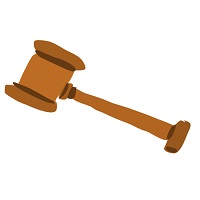Bankruptcy
- Introduction
- Types of bankruptcy
- Bankruptcy court rules
- Bankruptcy court forms
- Before filing for bankruptcy
Introduction
Bankruptcy is a federal law, Title 11 of the United States Code, that provides relief to people burdened with debt. Bankruptcy is a complicated process that can negatively affect your credit score and your future ability to borrow money.
According to the U.S. Courts website:
Individuals can file bankruptcy without an attorney, which is called filing pro se. However, seeking the advice of a qualified attorney is strongly recommended because bankruptcy has long-term financial and legal outcomes.
For help finding an attorney in Iowa, visit our Finding a Lawyer page.
This article provides the basic outline of bankruptcy law, but many other resources exist that can help you better understand bankruptcy law, including from the Iowa State Bar Association and the U.S. Courts. The Northern District of Iowa Bankruptcy Court and the Southern District of Iowa Bankruptcy Court each also provide additional information on filing for bankruptcy without an attorney.
Types of bankruptcy
As an individual or couple seeking to file bankruptcy, your options are Chapter 7 bankruptcy and Chapter 13 bankruptcy.
Chapter 7 bankruptcy is the most common type of bankruptcy and involves discharge of most unsecured debts. Discharge of a debt means that the debtor no longer has to pay that debt. As part of the Chapter 7 process, the debtor may have to sell certain “non-exempt” property, with the proceeds from the sales used to pay their creditors. Iowa Code chapter 627 lists the types of property that are exempt from sale in Iowa.
For more information on Chapter 7 bankruptcy, read Chapter 7 - Bankruptcy Basics from the U.S. Courts.
Chapter 13 bankruptcy is more like a payment plan, and is also called a “wage earner’s plan.” This provides individuals with regular income a chance to develop a plan to repay all or part of their debts. Under Chapter 13, the payment plan must be between 3 and 5 years long. A significant benefit of Chapter 13 bankruptcy is that it allows someone behind on their mortgage payments to save their home from foreclosure.
For more information on Chapter 13 bankruptcy, read Chapter 13 – Bankruptcy Basics from the U.S. Courts.
Bankruptcy court rules

You will also need to be familiar with the local rules and any relevant judicial orders of the bankruptcy court where you file.
- Northern District of Iowa Bankruptcy Court Local Rules
- Northern District of Iowa Bankruptcy Court Judicial Orders
- Southern District of Iowa Bankruptcy Court (no local rules, but additional guidance provided)
- Southern District of Iowa Bankruptcy Court Judicial Orders
If you are not sure which bankruptcy court you should file in, review the counties served by the Northern District of Iowa and the counties services by the Southern District of Iowa.
Bankruptcy court forms
The U.S. Courts provide a variety of bankruptcy forms. As with all forms, if you have decided to file for bankruptcy on your own, make sure you carefully select the forms you use and fill them out fully and honestly. The U.S. Courts provides a detailed booklet of instructions for bankruptcy forms for individuals. Read this booklet carefully before filing any forms. You should also review the local forms option for the bankruptcy court where you file.
Before filing for bankruptcy
Before you file for bankruptcy, you will need to complete pre-bankruptcy credit counseling from an approved credit counseling organization. Use the approved credit counseling agencies list from the Department of Justice to find an approved organization for your district.
For a brief introduction to bankruptcy, view this video, produced by the U.S. Courts:
